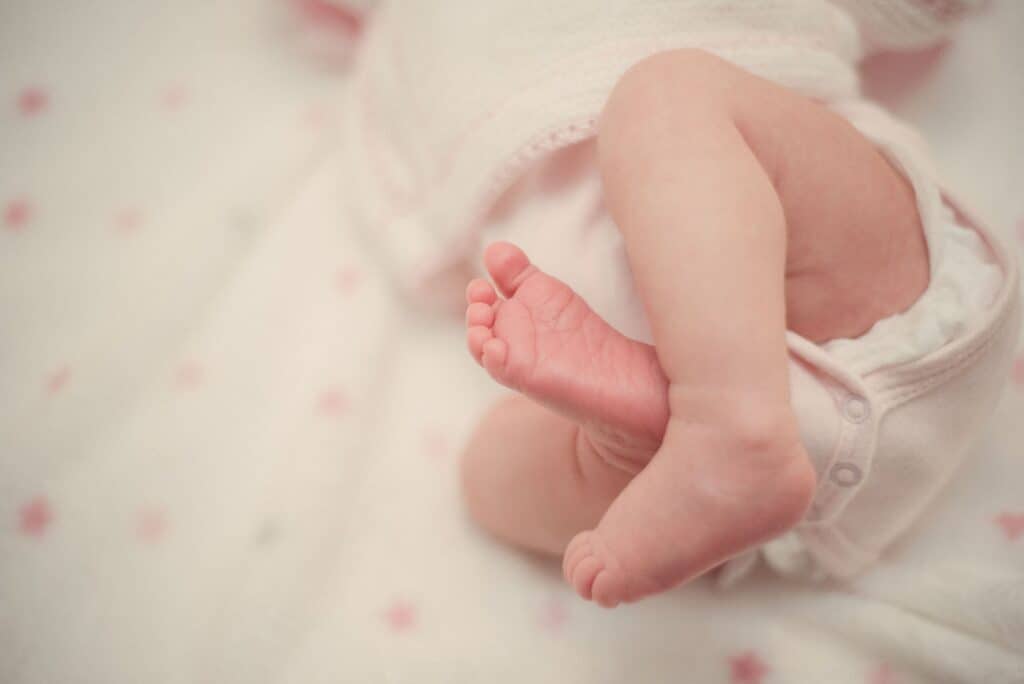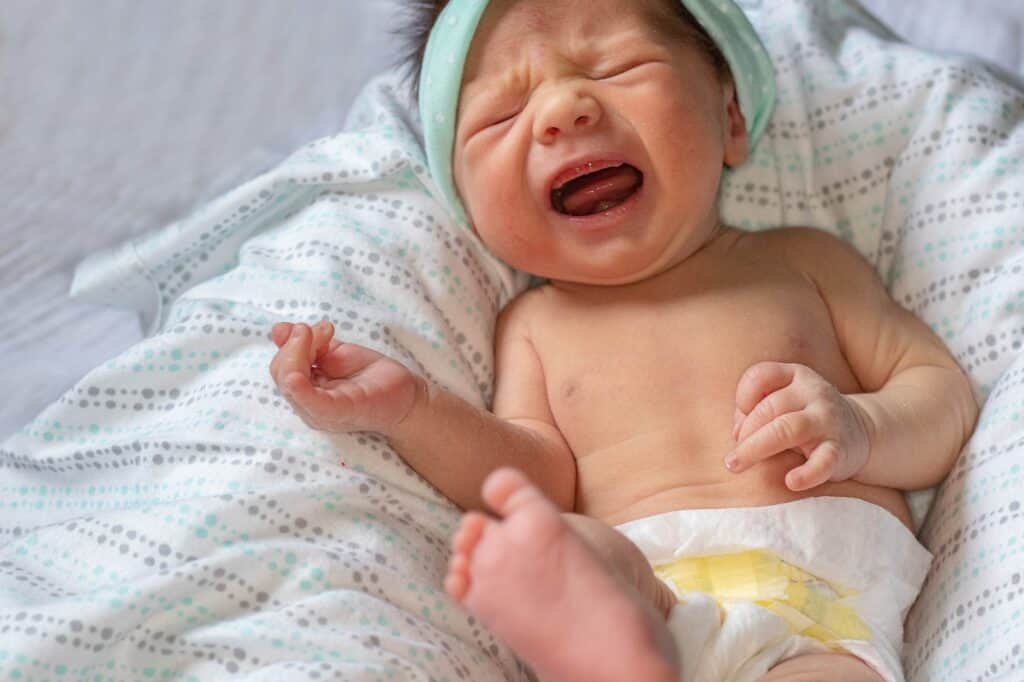Recognizing when a baby’s diaper needs to be changed is an essential part of caring for an infant. However, for new parents or caregivers, it can be challenging to determine when a diaper is wet. Knowing the signs of a wet diaper can help prevent diaper rash, discomfort, and potential health problems for the baby.
Understanding diaper basics is the first step in recognizing a wet diaper. Disposable or cloth, diapers are designed to absorb moisture and keep the baby dry. However, they have different indicators of wetness. Disposable diapers have a color-changing strip that turns blue or green when wet, while cloth diapers feel heavy and damp to the touch. In either case, it is crucial to keep track of how often the baby wets their diaper to ensure they are comfortable and healthy.
Key Takeaways
- Understanding diaper basics is essential in recognizing a wet diaper.
- Physical checks such as feeling for dampness and weight can help determine if a diaper is wet.
- Recognizing the signs of a wet diaper can prevent discomfort and potential health problems for the baby.
Understanding Diaper Basics
When it comes to taking care of newborns or babies, one of the most important things to understand is how to tell if a diaper is wet. This is crucial for ensuring that the baby stays clean, dry, and comfortable. In this section, we will discuss the basics of diapers, including the different types of diapers, how to choose the right size, and how to tell if a diaper is wet.

Types of Diapers
There are two main types of diapers: cloth diapers and disposable diapers. Cloth diapers are reusable and made of a variety of materials, such as cotton, bamboo, or hemp. Disposable diapers, on the other hand, are designed to be used once and then thrown away. They are made of a combination of materials, including plastic, wood pulp, and superabsorbent polymers.
Choosing the Right Size
Choosing the right size of diaper is important for ensuring that the diaper fits properly and does not leak. Diapers are typically sized based on the weight of the baby, so it is important to weigh the baby regularly to ensure that the right size is being used. It is also important to note that babies grow quickly, so it is important to check the fit of the diaper regularly and switch to a larger size as needed.
How to Tell if a Diaper is Wet
There are several ways to tell if a diaper is wet. The most obvious way is to check the diaper itself. If the diaper is visibly sagging or feels heavy, it is likely wet. Another way to tell if a diaper is wet is to use a diaper sensor or wetness indicator. Some disposable diapers come with a built-in sensor that changes color when the diaper is wet. Cloth diapers can also be fitted with a sensor or wetness indicator.
Overall, understanding the basics of diapers is essential for taking care of newborns and babies. By choosing the right type and size of diaper and knowing how to tell if a diaper is wet, parents can ensure that their baby stays clean, dry, and comfortable.
Recognizing a Wet Diaper
Recognizing a wet diaper is important to ensure that the baby stays comfortable and dry. There are several ways to tell if a diaper is wet, including the use of indicators, the feel of the diaper, and changes in color.
One way to tell if a diaper is wet is by checking for a wetness indicator. Many modern diapers come with a small strip that changes color when the diaper is wet. These indicators are a useful tool for parents who may not be able to check the diaper as frequently as they would like.
Another way to tell if a diaper is wet is by feeling it. A wet diaper will feel squishy and heavy, while a dry diaper will feel light and fluffy. Parents can also check for leaks or wet spots on the outside of the diaper.
In addition to these methods, parents can also look for changes in color. Some diapers may have a color-changing feature that indicates when the diaper is wet. This can be helpful for parents who are unsure if the diaper needs to be changed.
It is important to note that not all diapers have wetness indicators or color-changing features. In these cases, parents should rely on the feel of the diaper and check for leaks or wet spots.
Overall, recognizing a wet diaper is an important part of caring for a baby. By using indicators, feeling the diaper, and checking for changes in color, parents can ensure that their baby stays dry and comfortable.
Physical Checks for Wet Diapers
When it comes to checking if a diaper is wet, there are several physical checks that can be done to determine if a change is necessary. Here are some of the most effective checks:

Smell Check
One of the easiest ways to tell if a diaper is wet is to smell it. If the diaper smells strongly of urine, then it is likely wet and needs to be changed. However, it is important to note that not all wet diapers will have a strong odor.
Thigh Check
Another way to check if a diaper is wet is to feel the baby’s thighs. If the thighs feel damp or wet, then the diaper is likely wet and needs to be changed. This is because urine tends to pool in the bottom of the diaper, causing the fabric to become saturated.
Butt Check
Checking the baby’s butt is another way to determine if a diaper is wet. If the diaper feels heavy or saggy around the baby’s bottom, or if the baby’s skin feels damp, then the diaper is likely wet and needs to be changed.
Leaks
If a diaper is leaking, then it is definitely wet and needs to be changed. Leaks can occur when a diaper is too small, not fastened properly, or when the baby has had a particularly heavy wetting.
It is important to note that some babies may not give any obvious signs that their diaper is wet, so it is important to check the diaper regularly to ensure that it is clean and dry. By using a combination of these physical checks, parents and caregivers can ensure that their baby is comfortable and dry throughout the day.
Signs Your Baby Needs a Diaper Change
Knowing when to change your baby’s diaper is important for their comfort and hygiene. Here are some signs to look out for:
1. Crying or Irritability
If your baby is crying or fussy, it could be a sign that they need a diaper change. Wet or dirty diapers can cause discomfort and irritation, leading to fussiness and crying.
2. Checking the Diaper
Checking the diaper regularly is a good way to determine if it needs to be changed. A wet diaper will feel heavy and may have a bulge in the front. A dirty diaper will have a noticeable odor and may have visible stool.
3. Discoloration
A wet diaper may have a yellow or greenish tint, while a dirty diaper will have a brown or greenish color. Checking the color of the diaper can help determine if it needs to be changed.
4. Sleeping Habits
If your baby is waking up frequently during naps or at night, it could be a sign that they need a diaper change. Wet or dirty diapers can disrupt their sleep and cause discomfort.
5. Time Elapsed
It’s important to change your baby’s diaper regularly, even if they don’t show any obvious signs of discomfort. A general rule of thumb is to change diapers every 2-3 hours during the day and once during the night.
By paying attention to these signs, parents can ensure their baby is comfortable and clean, promoting healthy development and a happy baby.
Frequency of Wet Diapers
One of the key indicators that a diaper needs changing is when it becomes wet. The frequency of wet diapers can vary depending on a variety of factors, such as the age of the baby and whether they are breastfed or formula-fed.

Newborn babies typically require more frequent diaper changes than older babies. During the first week of life, a newborn may produce as many as 8-10 wet diapers per day. As they get older, the frequency of wet diapers may decrease to around 6-8 per day.
Breastfed babies tend to produce more frequent wet diapers than formula-fed babies. This is because breast milk is easier to digest and passes through the baby’s system more quickly. Breastfed babies may produce as many as 10-12 wet diapers per day, while formula-fed babies may produce around 6-8.
It’s important to note that these are just general guidelines, and the frequency of wet diapers can vary from baby to baby. It’s important to monitor your baby’s diaper output and look for signs that they may need a diaper change, such as a sagging or heavy diaper, or a strong smell.
In summary, the frequency of wet diapers can vary depending on the age of the baby and whether they are breastfed or formula-fed. Newborns typically require more frequent diaper changes than older babies, and breastfed babies tend to produce more frequent wet diapers than formula-fed babies. It’s important to monitor your baby’s diaper output and look for signs that they may need a diaper change.
Health Implications of Wet Diapers
Wet diapers are common in babies and toddlers, but it’s important to know when a diaper is too wet. A wet diaper can cause skin irritation and discomfort, which can lead to diaper rash.
Diaper rash is a common skin condition that occurs when the skin is exposed to moisture for extended periods. The rash can be red, inflamed, and painful, making it uncomfortable for the baby. It’s essential to change wet diapers frequently to prevent diaper rash and keep the baby comfortable.
Moreover, wet diapers can also lead to dehydration. Babies need to stay hydrated, and a soiled diaper can cause fluid loss, leading to dehydration. Dehydration can cause various health issues, such as headaches, fatigue, and dizziness. Therefore, it’s crucial to keep the baby’s diaper dry to prevent dehydration.
In addition, a wet diaper can also increase the risk of infection. A soiled diaper can harbor bacteria, leading to urinary tract infections (UTIs). UTIs can cause symptoms such as hematuria (blood in the urine), pain during urination, and fever. Therefore, it’s essential to change wet diapers frequently to prevent UTIs and keep the baby healthy.
Finally, a concentrated urine, also known as brick dust urine, can be a sign of dehydration. A concentrated urine can cause skin irritation, leading to discomfort and diaper rash. Therefore, it’s crucial to keep the baby hydrated and change wet diapers frequently to prevent concentrated urine.
In conclusion, wet diapers can cause various health implications such as skin irritation, discomfort, dehydration, and infection. It’s essential to change wet diapers frequently to prevent these health issues and keep the baby healthy and comfortable.
Caregiver Tips for Diaper Changes
Changing a diaper is a crucial aspect of caring for an infant, but it can be a daunting task for new parents. With the right techniques and tools, however, it can be a breeze. Here are some tips for caregivers to make diaper changes easier and more effective:

1. Be Prepared
Before beginning a diaper change, make sure you have everything you need within reach. This includes clean diapers, wipes, diaper cream, and a changing pad. Having everything at arm’s length will make the process smoother and prevent any accidents.
2. Choose the Right Diaper Size
It’s important to choose the right size diaper for your baby. A diaper that is too small will not be effective in containing leaks, while a diaper that is too large can cause discomfort and irritate the skin. Refer to the weight guidelines on the diaper packaging to ensure the proper fit.
3. Use Wipes Effectively
Wipes are an essential tool for cleaning during diaper changes. Use wipes to clean the diaper area thoroughly, wiping from front to back to prevent any infections. Be sure to use a fresh wipe for each wipe to avoid spreading bacteria.
4. Apply Diaper Cream as Needed
Diaper rash is a common issue that can be prevented by applying diaper cream. Apply a thin layer of diaper cream to the affected area before putting on a clean diaper. This will create a barrier between the skin and the diaper, preventing irritation.
5. Be Mindful of Your Baby’s Comfort
Diaper changes can be uncomfortable for babies, so it’s important to be mindful of their comfort. Use a gentle touch and avoid pulling or tugging on the diaper. Singing or talking to your baby during the change can also help soothe them.
By following these tips, caregivers can make diaper changes a smooth and stress-free experience for both themselves and their little ones.
Understanding Feeding and Diaper Wetness
One of the most important things for parents to understand is how to tell if their baby’s diaper is wet. This is especially important for newborns who require frequent diaper changes to maintain good hygiene and prevent diaper rash.
The frequency of diaper changes will depend on the baby’s age, feeding method, and liquid intake. Breastfed babies, for example, tend to have more frequent diaper changes than formula-fed babies because breast milk is easier to digest and passes through the baby’s system more quickly.
It’s important for parents to monitor their baby’s diaper wetness to ensure that they are getting enough milk. A baby who is not getting enough milk may have fewer wet diapers, which can be a sign of dehydration or inadequate milk supply.
Parents can use the following tips to help them determine if their baby’s diaper is wet:
- Check the diaper frequently, especially after feedings and naps.
- Look for signs of dampness or heaviness in the diaper.
- Check the color of the diaper. A wet diaper will be darker in color than a dry one.
- If in doubt, use a clean finger to feel the inside of the diaper. It should feel damp but not soaking wet.
By understanding their baby’s feeding habits and monitoring their diaper wetness, parents can ensure that their baby is getting enough milk and staying clean and comfortable.
Also read some tips and etiquette when Changing Diapers in Public.
Frequently Asked Questions
How much pee is considered a wet diaper?
A wet diaper is one that has been soiled by urine. The amount of urine that constitutes a wet diaper varies depending on the age of the baby. For newborns, a single wet diaper in a 4-hour period is considered normal. For older babies, a wet diaper every 2-3 hours is expected.
How to tell if a baby needs a diaper change?
There are several signs that indicate a baby needs a diaper change. These include a strong odor, a bulging diaper, redness or irritation around the diaper area, and fussiness or crying. Some babies may also give a signal, such as pulling at their diaper or making a certain noise.
Too many wet diapers in newborns?
Newborns typically have a lot of wet diapers, as they have small bladders and need to eat frequently. As long as the baby is gaining weight and producing wet and dirty diapers, there is usually no cause for concern. However, if a newborn has fewer than six wet diapers a day, it may be a sign of dehydration and a doctor should be consulted.
How many wet diapers are too many?
There is no such thing as too many wet diapers, as long as they are not causing irritation or discomfort for the baby. In fact, frequent urination is a sign that the baby is well-hydrated and healthy.
How to know when to change diaper size?
Diaper size should be changed when the current size no longer fits properly or is causing leaks. Signs that a diaper is too small include red marks on the baby’s skin, difficulty fastening the tabs, and frequent leaks. If the diaper is too big, it may sag or cause leaks around the legs.
How do you know if your Pampers diaper is wet?
Pampers diapers have a wetness indicator that changes color when the diaper is wet. The indicator is a yellow line that turns blue when wet. This makes it easy to tell when it’s time for a diaper change without having to check the diaper itself.

Iesha is a loving mother of 2 beautiful children. She’s an active parent who enjoys indoor and outdoor adventures with her family. Her mission is to share practical and realistic parenting advice to help the parenting community becoming stronger.
